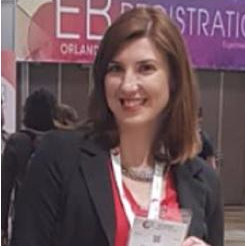The Role of NRF2 in Health and Disease
A special issue of International Journal of Molecular Sciences (ISSN 1422-0067). This special issue belongs to the section "Biochemistry".
Deadline for manuscript submissions: 30 April 2024 | Viewed by 3692
Special Issue Editors
Interests: inflammation; oxidative stress; biochemistry; pharmacology; molecular biology
Special Issues, Collections and Topics in MDPI journals
Interests: biomarkers; molecular pathways; oxidative stress; inflammation; natural compound; clinical and pre-clinical studies
Special Issues, Collections and Topics in MDPI journals
Interests: clinical biochemistry; inflammation; oxidative stress; neurodegeneration; natural compounds
Special Issues, Collections and Topics in MDPI journals
Special Issue Information
Dear Colleagues,
Nuclear factor erythroid 2-related factor 2 (Nrf2) is a major transcription factor involved in redox homeostasis and in the response induced by oxidative injury. It plays a major role in the dynamic regulation of a network of antioxidant and cytoprotective genes through binding to and activating the expression of promoters containing the antioxidant response element (ARE). Nrf2 activity is regulated by many mechanisms, suggesting that tight control is necessary for normal cell function, and both the hypoactivation and hyperactivation of Nrf-2 could play a role in various aspects of inflammatory diseases. Multiple classes of chemical inducers are known to elevate endogenous antioxidants by activating Nrf2. This Special Issue will focus on the role of NRF-2 in health or disease conditions and on the targeted activation of the Nrf-2 pathway, which could be a useful avenue in developing new therapeutics.
The Special Issue will feature original articles on in vivo and in vitro studies and reviews.
Dr. Daniela Impellizzeri
Dr. Ramona D'Amico
Dr. Rosalba Siracusa
Guest Editors
Manuscript Submission Information
Manuscripts should be submitted online at www.mdpi.com by registering and logging in to this website. Once you are registered, click here to go to the submission form. Manuscripts can be submitted until the deadline. All submissions that pass pre-check are peer-reviewed. Accepted papers will be published continuously in the journal (as soon as accepted) and will be listed together on the special issue website. Research articles, review articles as well as short communications are invited. For planned papers, a title and short abstract (about 100 words) can be sent to the Editorial Office for announcement on this website.
Submitted manuscripts should not have been published previously, nor be under consideration for publication elsewhere (except conference proceedings papers). All manuscripts are thoroughly refereed through a single-blind peer-review process. A guide for authors and other relevant information for submission of manuscripts is available on the Instructions for Authors page. International Journal of Molecular Sciences is an international peer-reviewed open access semimonthly journal published by MDPI.
Please visit the Instructions for Authors page before submitting a manuscript. There is an Article Processing Charge (APC) for publication in this open access journal. For details about the APC please see here. Submitted papers should be well formatted and use good English. Authors may use MDPI's English editing service prior to publication or during author revisions.
Keywords
- Nrf2
- disease
- inflammation
- oxidative stress
- therapeutics
- animal models studies
- in vitro studies







